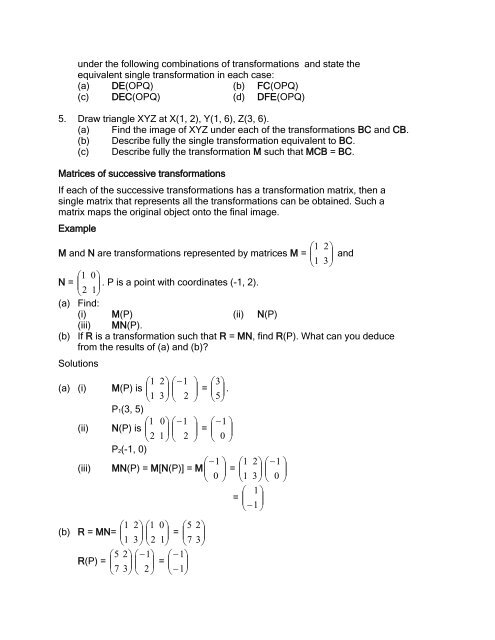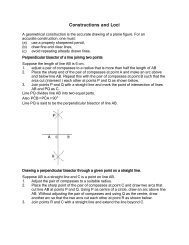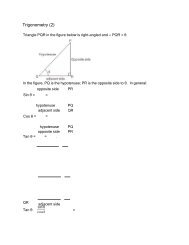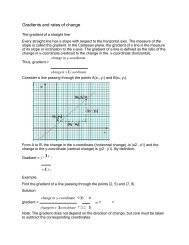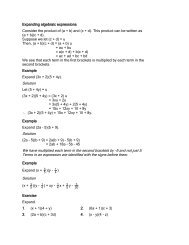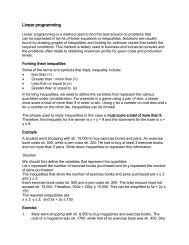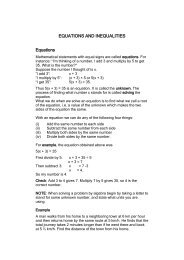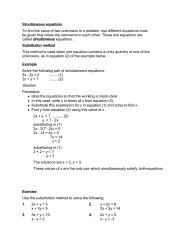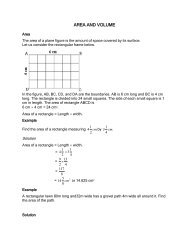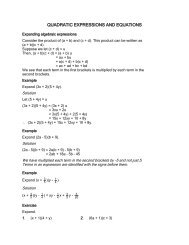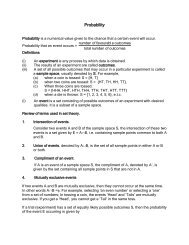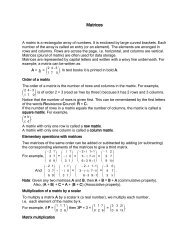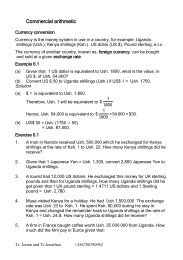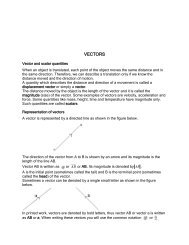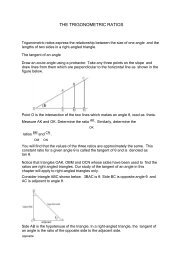J20
Create successful ePaper yourself
Turn your PDF publications into a flip-book with our unique Google optimized e-Paper software.
under the following combinations of transformations and state the<br />
equivalent single transformation in each case:<br />
(a) DE(OPQ) (b) FC(OPQ)<br />
(c) DEC(OPQ) (d) DFE(OPQ)<br />
5. Draw triangle XYZ at X(1, 2), Y(1, 6), Z(3, 6).<br />
(a) Find the image of XYZ under each of the transformations BC and CB.<br />
(b) Describe fully the single transformation equivalent to BC.<br />
(c) Describe fully the transformation M such that MCB = BC.<br />
Matrices of successive transformations<br />
If each of the successive transformations has a transformation matrix, then a<br />
single matrix that represents all the transformations can be obtained. Such a<br />
matrix maps the original object onto the final image.<br />
Example<br />
M and N are transformations represented by matrices M =<br />
1<br />
<br />
1<br />
2<br />
and<br />
3<br />
1<br />
0<br />
N = . P is a point with coordinates (-1, 2).<br />
2<br />
1<br />
(a) Find:<br />
(i) M(P) (ii) N(P)<br />
(iii) MN(P).<br />
(b) If R is a transformation such that R = MN, find R(P). What can you deduce<br />
from the results of (a) and (b)?<br />
Solutions<br />
1<br />
2<br />
1<br />
3 <br />
(a) (i) M(P) is = .<br />
1<br />
3<br />
2 5<br />
P1(3, 5)<br />
1<br />
0<br />
1<br />
1<br />
<br />
(ii) N(P) is = <br />
2<br />
1 2 0 <br />
P2(-1, 0)<br />
1<br />
1<br />
2<br />
1<br />
<br />
(iii) MN(P) = M[N(P)] = M<br />
= <br />
0 1<br />
3<br />
0 <br />
1 <br />
= <br />
1<br />
<br />
1<br />
2<br />
1<br />
0<br />
5<br />
2<br />
(b) R = MN= = <br />
1<br />
3<br />
2<br />
1<br />
7<br />
3<br />
5<br />
2<br />
1 1<br />
R(P) = = <br />
7<br />
3<br />
2 1


